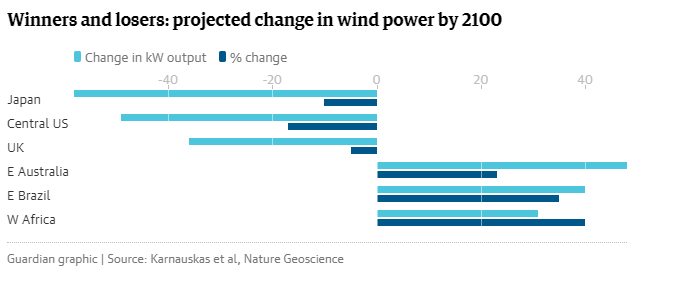MN House Energy and Climate Finance Committee Modeling Should Include Future Wind Speeds
The Minnesota House of Representatives has proposed spending $550,000 on a study to be conducted by the University of Minnesota exploring the impacts of climate change in Minnesota. What’s unique about the study is that it would require the University to conduct a study producing climate model projections through the rest of this century for 10-square mile blocks covering the entire state.
The study would be required to develop a series of projections of temperature, precipitation, snow cover, and a variety of other climate parameters over the rest of this century.
This morning I testified in front of the Committee instructing them to add another requirement to the climate parameters they want the University to study: wind speeds.
Bloomberg has already reported that this year’s El Niño event, albeit mild, resulted in wind turbines producing 14 percent less electricity compared to the previous year, despite the fact that more wind turbines have been built during that time.
Additionally, a December 2017 study published in the journal Nature Geoscience was the first global study to project the impact of temperature rises on wind turbine output. In short, the study found big changes in electricity generation by wind turbines by the end of the century in many of the places hosting large numbers of turbines, including the Central United States, where Minnesota is located.
These were not some “climate change denier” models, either. They were the same climate models used by the UN’s Intergovernmental Panel on Climate Change to predict temperature and emissions changes. These are the same models that Minnesota DFL lawmakers have cited to promote using greater quantities of wind energy in our state.
This is problematic because the modelers found that no region in the world would see wind power drop more than the Central United States, as a percentage of their output.
The models found wind electricity output in the Central United States could fall 17 percent. Wind output would fall the most in the northern mid-latitudes because the major driver of wind in these regions is the temperature difference between the Arctic and the tropics, and as the arctic warms, say the models, it would reduce the difference between the arctic and the tropics, reducing wind speeds.

A 17 percent reduction in wind output is an alarmingly large figure because I recently wrote about how a 14 percent decrease in electricity output at Minnesota’s third-largest wind farm resulted in costs increasing by 17 percent. If wind speeds fall by as much as they are modeled to fall, wind energy will be even more expensive than it is today.
Furthermore, if you believe the models, the reductions in wind speed will likely occur even if Minnesota were to our carbon dioxide emissions to zero, because Minnesota’s share of global carbon dioxide emissions represents just 0.00075 of CO2 emissions world-wide. On March 26th, The Washington Post wrote: “More than any others, China and India hold the climate’s future in their hands.” Reuters recently reported China is boosting it’s coal mining capacity despite it’s climate pledges, and India is also boosting coal use as the two countries try to raise hundreds of millions of people out of poverty.
If DFL lawmakers want to increase our reliance on wind power, then we must study how wind speeds would be affected by future global warming under a variety of emissions scenarios. Our latest study found it would be far more affordable to use nuclear power, rather than wind and solar, to meet carbon dioxide reduction goals. If wind speeds decline as Nature Geoscience predicts they will, then Minnesota must study alternatives, like nuclear and large hydro, if DLF lawmakers are serious about reducing CO2 emissions.